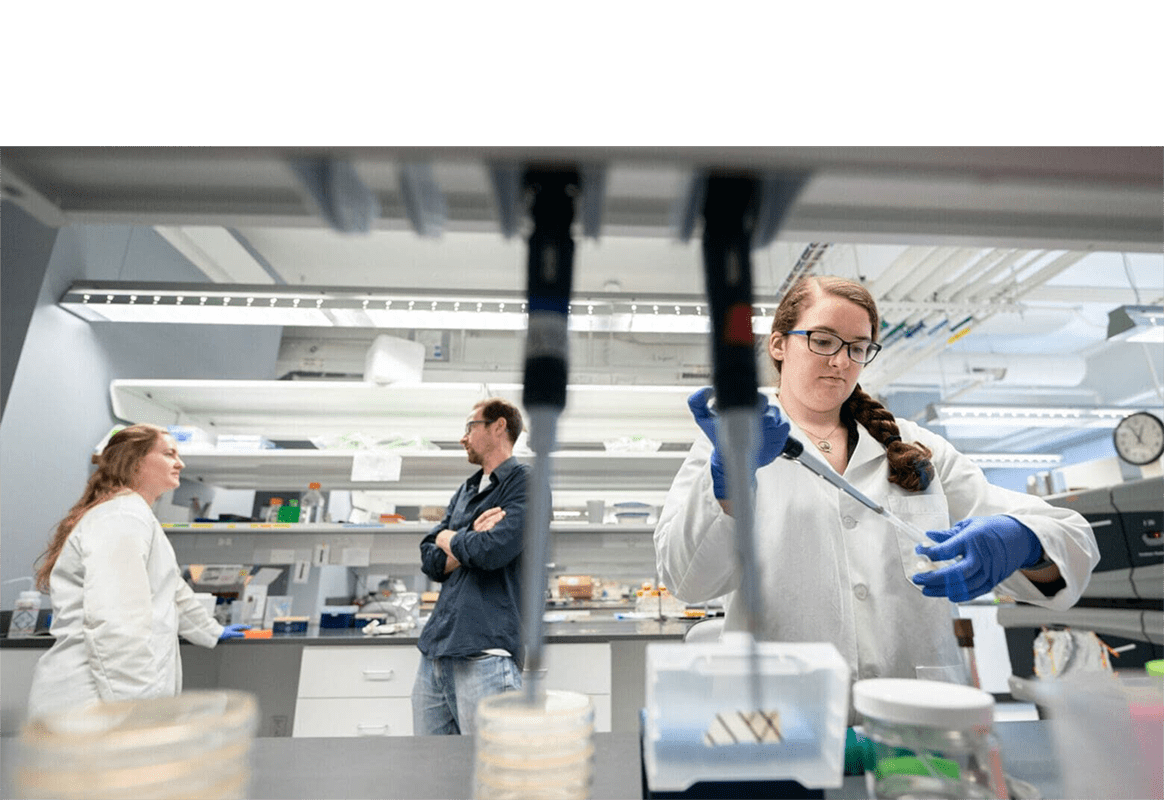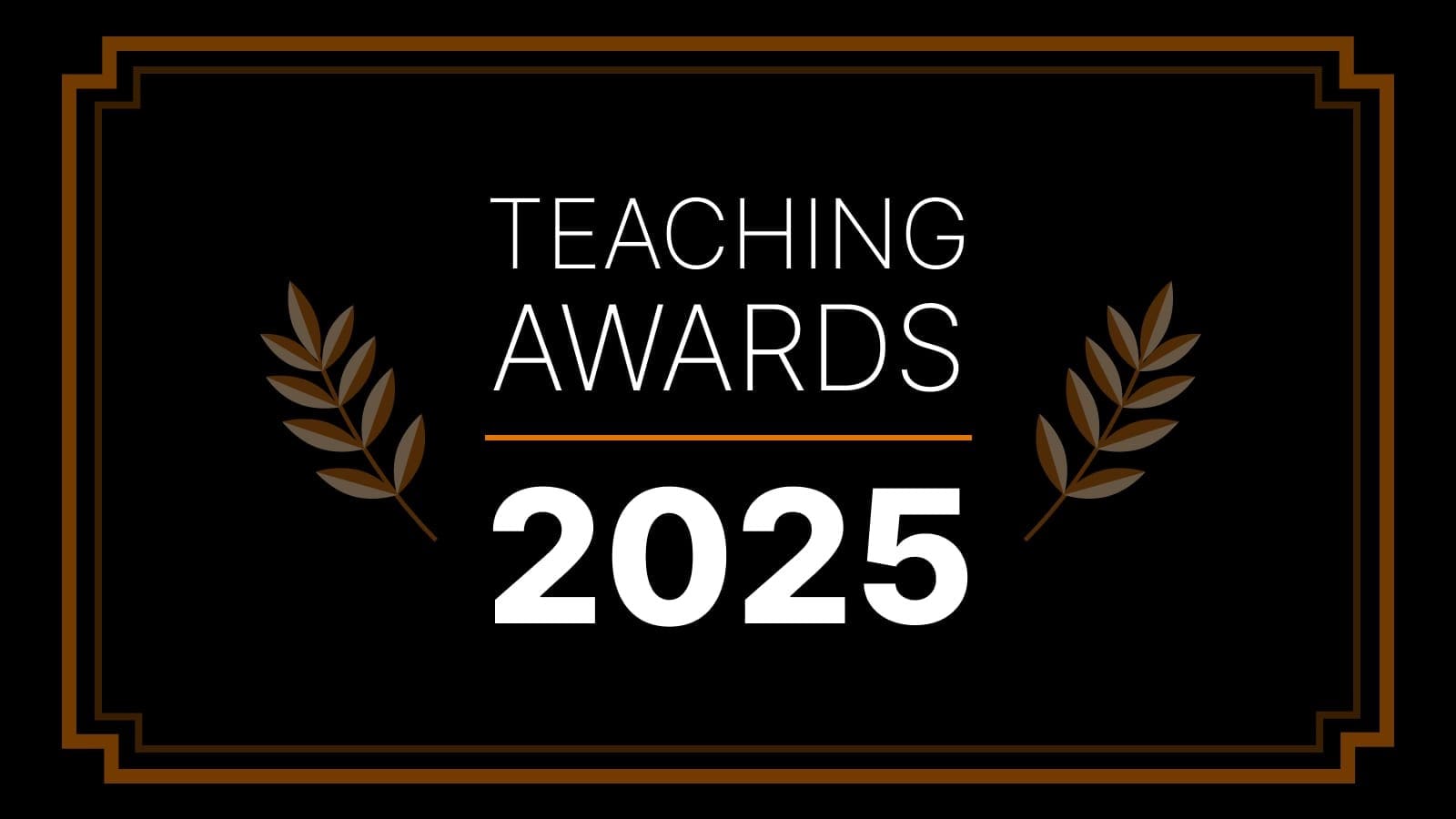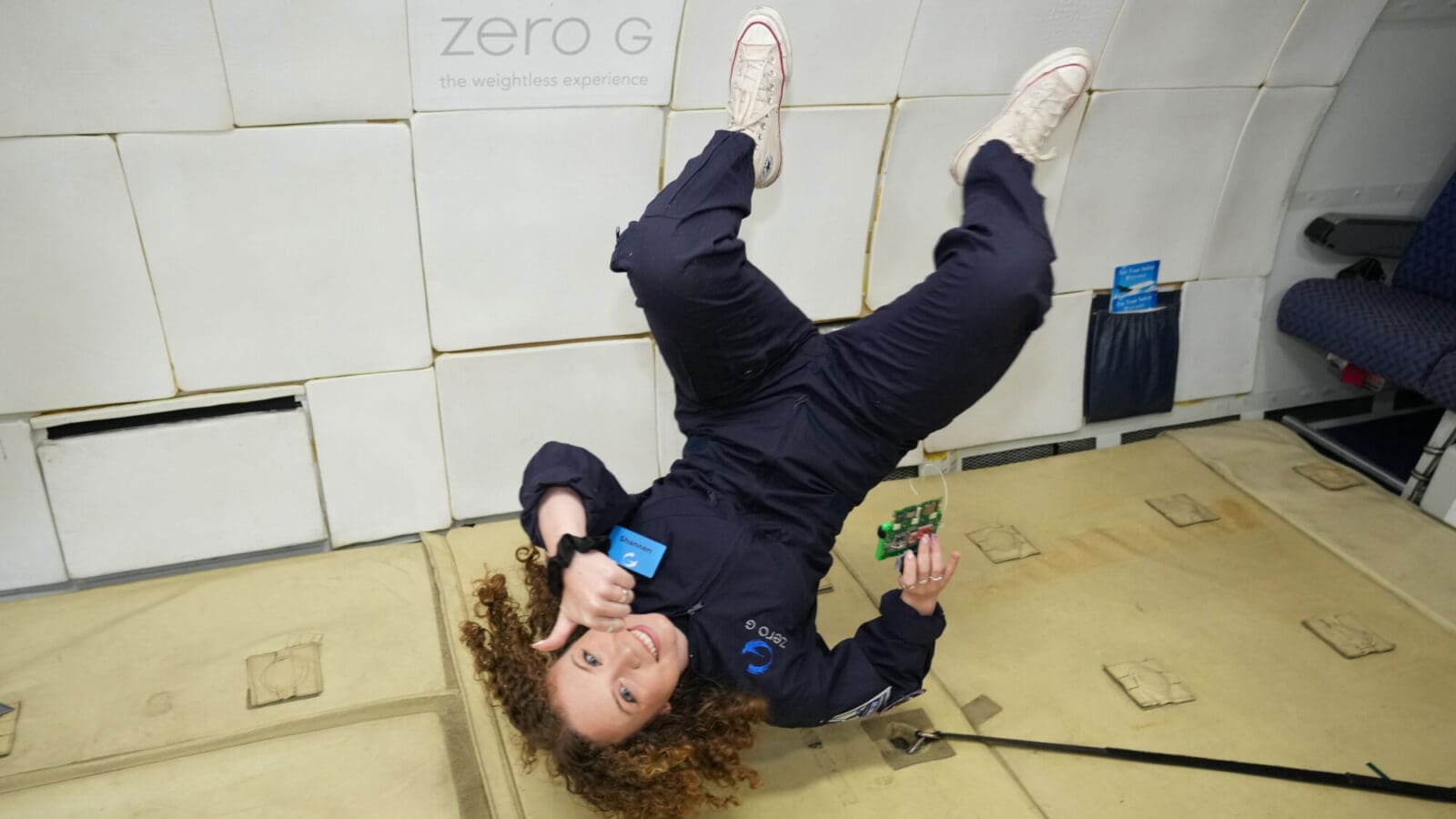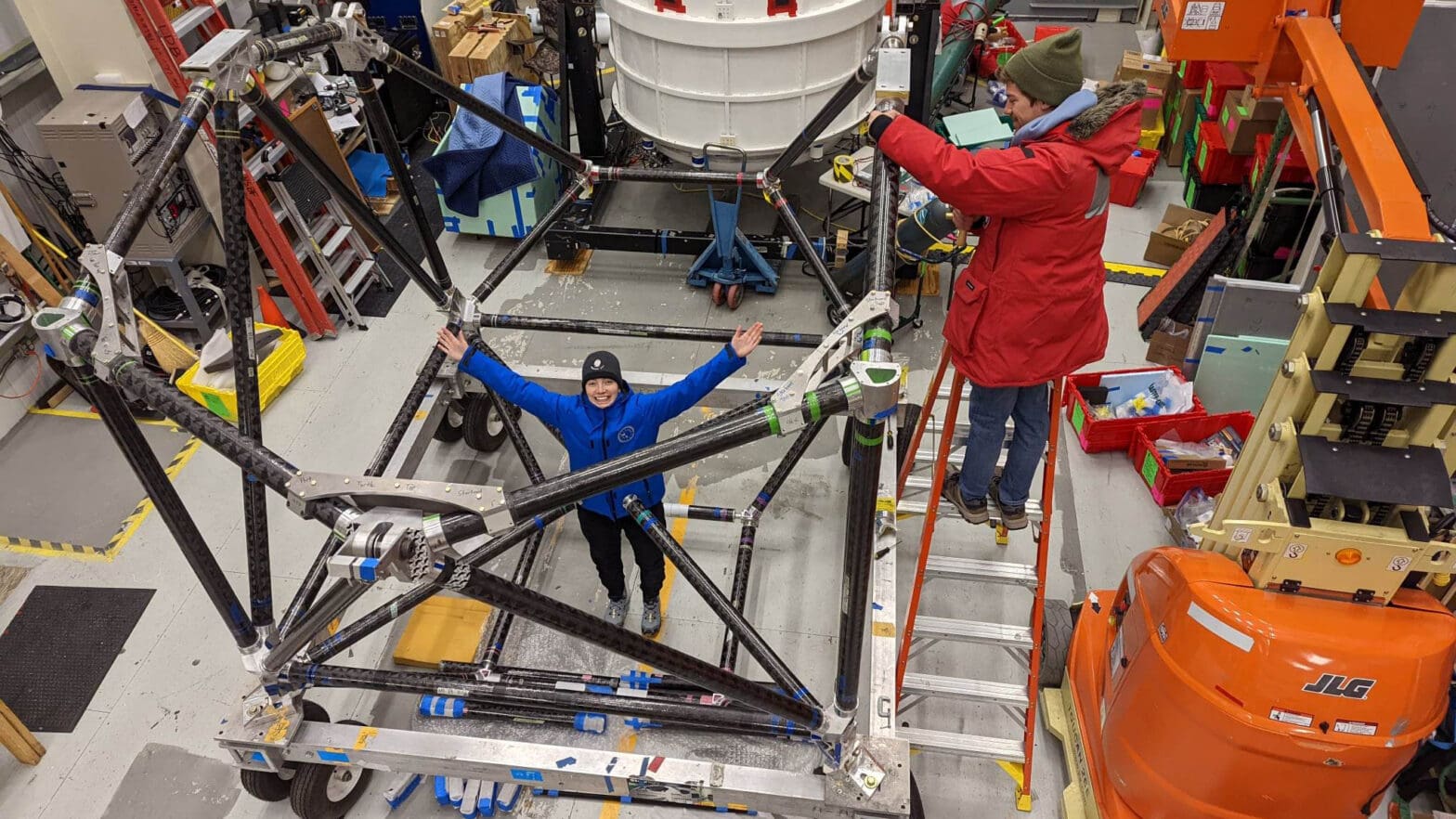
Exploring the origins of the universe through engineering
By
on
“It’s pretty wild,” she said.
Redmond, a fifth-year graduate student in mechanical and aerospace engineering, is part of an interdisciplinary team studying cosmic microwave background radiation, a key to understanding the evolution of the universe. The project, called SPIDER-II, involved sending a balloon 35 kilometers into space with an array of telescopes attached.
She has been at McMurdo Station in Antarctica since October 2022, which has about 600 scientists and support staff working on site during the Antarctic summer. “There’s a ton of science happening down here,” Redmond said. And despite the endless sunshine and cold, she finds that in some ways it feels similar to where she grew up, in the Canadian province of Newfoundland and Labrador. It’s not just the weather that’s similar, but also the “small community vibe.”
The community is an essential part of keeping up morale in such an isolated place, Redmond said, with researchers and staff organizing trivia nights and hikes, and finding time to decompress at the station bar. There’s even an observation window under the ice where you can sometimes see the seals swim by with their pups. (Penguins will arrive later in the season, Redmond said, once the sea ice breaks up.) “A lot of effort goes into keeping people sane down here,” she said.
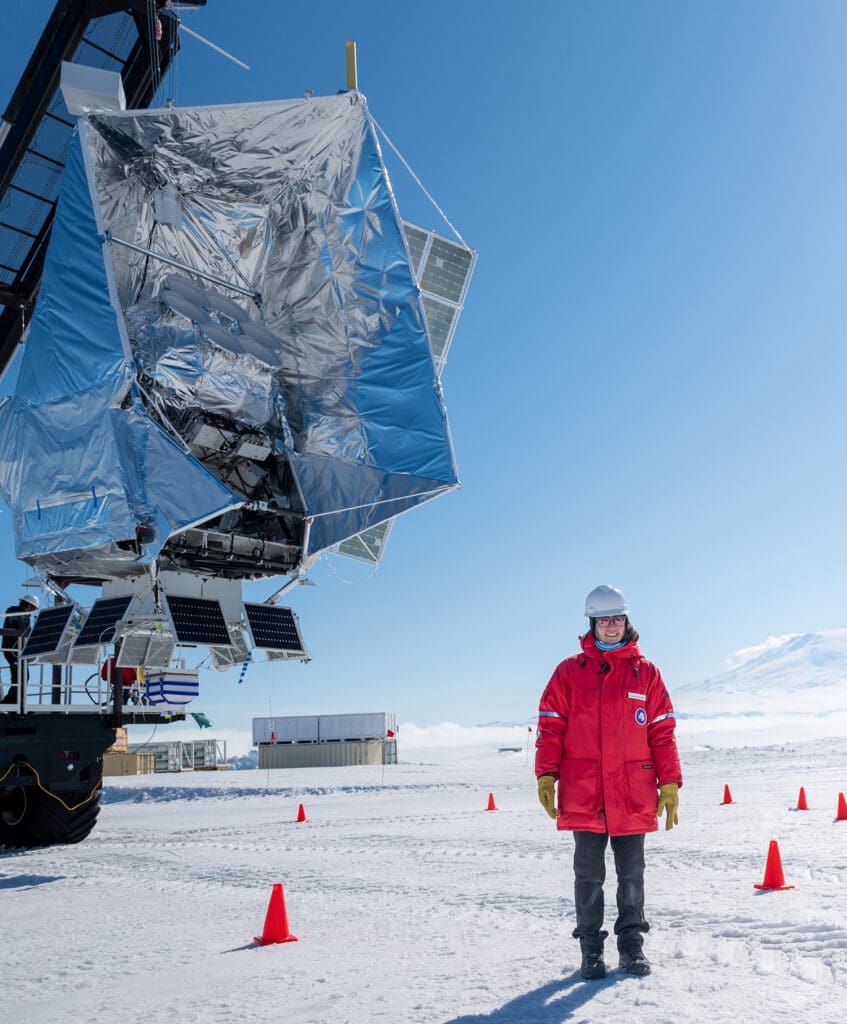
Once launched, the balloon remains airborne for weeks at a time, where it scans approximately 10% of the sky. It’s solar powered, which makes the constant Antarctic sunlight helpful. The project is led by the University of Illinois with collaboration from Princeton University and the University of Toronto, along with support from the National Science Foundation and NASA.
Redmond is responsible for thermal design and control on the project as well as the structural subsystems. For thermal design, she models the predicted temperature of component parts during flight and creates controls to ensure they are kept heated and cooled as needed. She has also done a full redesign and rebuild of the structure — an overhaul of the previous flight, SPIDER-I, which launched in 2015 — including overseeing an entire rebuild of the balloon’s gondola, which supports the telescopes.
Building balloon-borne telescopes involves “a great deal of physics and engineering expertise,” said William C. Jones, professor of physics and one of Redmond’s advisers. From proposal to design to launch, these projects take about five to seven years to complete, and grad students are involved in all phases of the project, including building all the specialized hardware.
“Susan has done amazing work,” Jones said. “Her interest and expertise in control systems and thermal and mechanical design make her a perfect fit for the research in our group.”
Redmond has been involved in these projects for about seven years, beginning when she was working toward a master of science degree in aerospace engineering at the University of Toronto. As an undergraduate, her interests weren’t necessarily space related — she started out studying mechanical engineering at the Memorial University of Newfoundland. “I always knew I wanted to do engineering,” she said, “and I thought I wanted to do something along the lines of planes, trains and automobiles.”
But an internship at the European Space Agency in the Netherlands piqued her interest in space telescopes. “I got hooked,” she said. Unlike working on cars and airplanes, “every telescope is different, and each one has new problems you need to solve, problems that are unique to a particular scientific goal.”
With SPIDER-II, for example, the detectors must be “really, really cold in order to measure the signal,” of cosmic microwave background, down to 300 millikelvin, which is minus 450 degrees Fahrenheit. To achieve this, the detectors — 6 monochromatic telescopes — are slotted into a vacuum vessel that is filled with liquid helium. The vacuum vessel is then mounted to a carbon fiber frame that allows the telescopes to point at the desired patch of sky while in space. These kinds of engineering challenges, Redmond said, provide many avenues for innovation.
Space telescopes also gave her a way to combine her interdisciplinary interests in engineering and astronomy. Her work at Princeton reflects these interests as well, and she is co-advised by Egemen Kolemen and Jeremy Kasdin in mechanical and aerospace engineering and Jones in physics. “I’ve been very fortunate in graduate school,” Redmond said, “to have worked on smaller team projects where everything is very interdisciplinary and you get to be a part of the full project, from start to finish.”
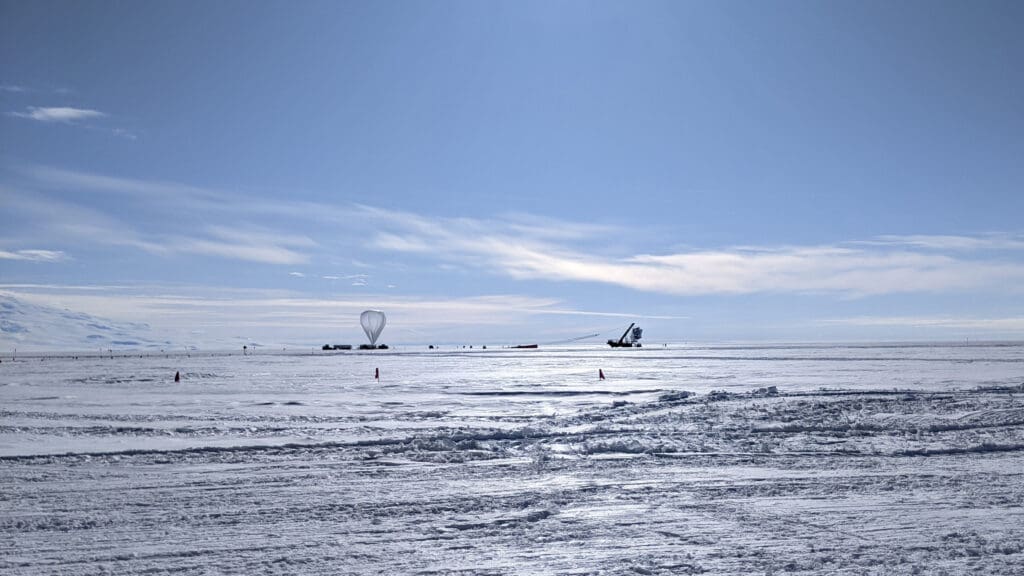
After Antarctica, Redmond’s next stop is Wānaka, New Zealand, where this spring she will help to build another balloon-borne space telescope, SuperBIT. The University of Toronto is leading that project, with collaboration from Princeton University and support from the NSF and NASA. This project is another cosmology experiment and will focus on studying dark matter, another key to understanding the evolution of the universe. This particular space telescope will provide a very wide field of view, according to Redmond — a field of view that is “about the size of the moon” and about 40 times greater than the Hubble telescope.
Considering the many years of hard work that it takes to design, build and launch them, balloon-borne telescopes are in flight for only for a short time. For Redmond, though, the years of work and the months spent in Antarctica begin to pay off when she sees that first star field or nebula on camera.


